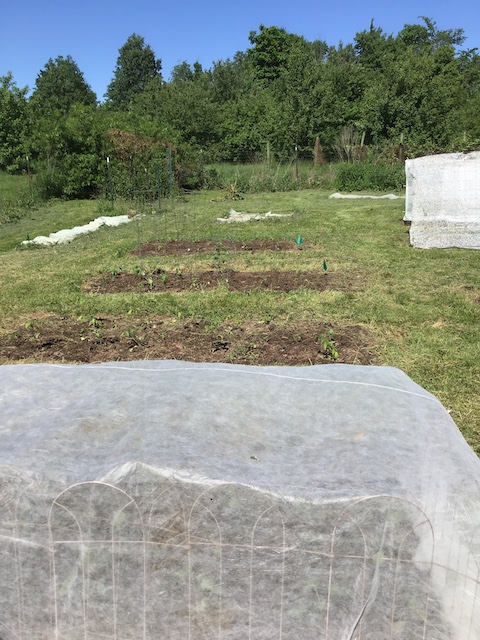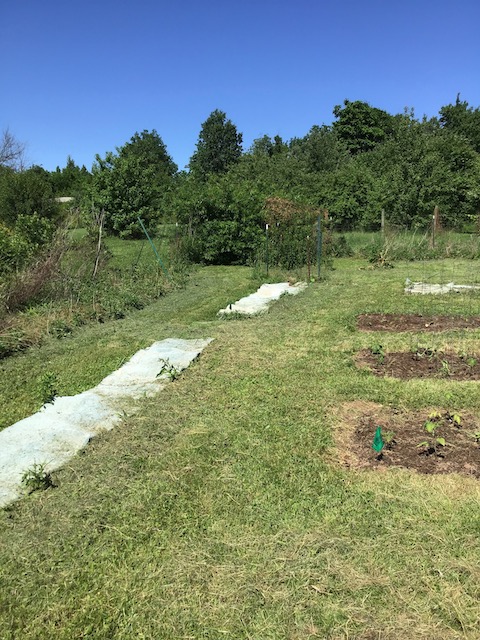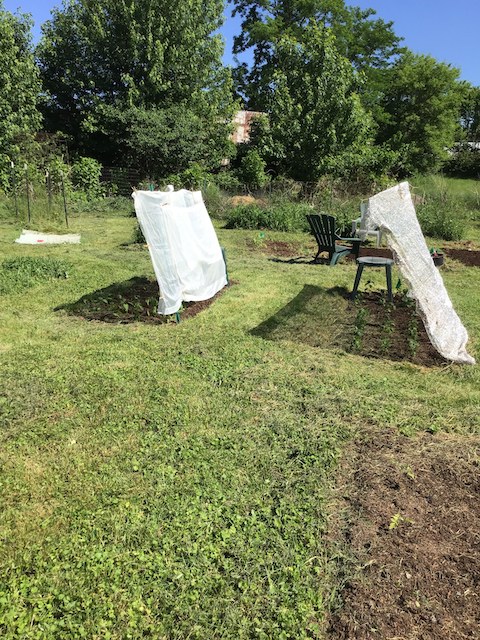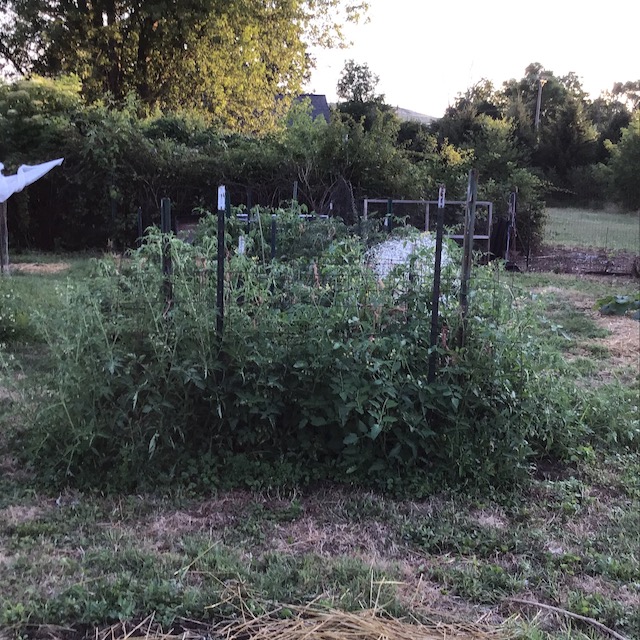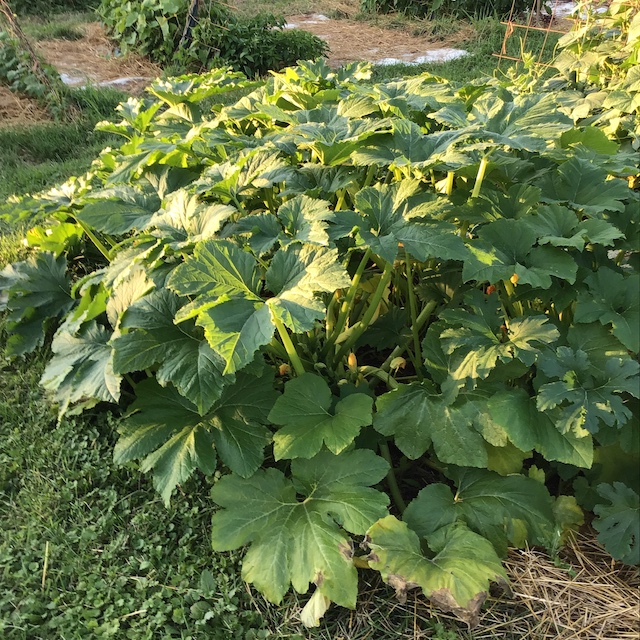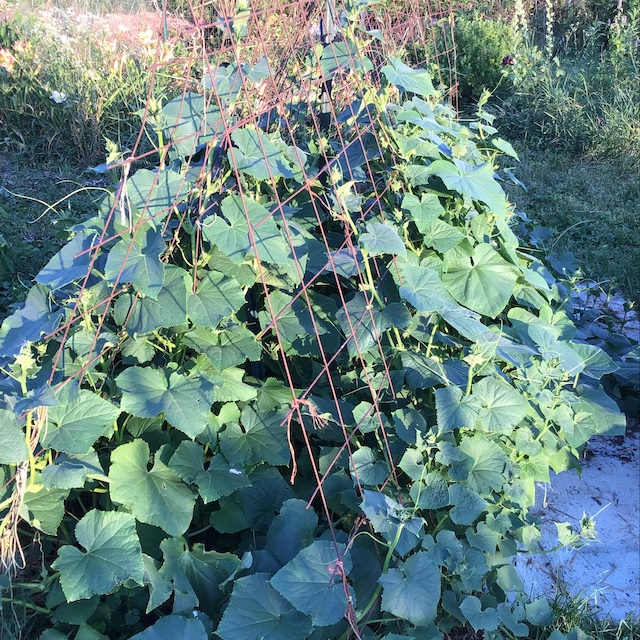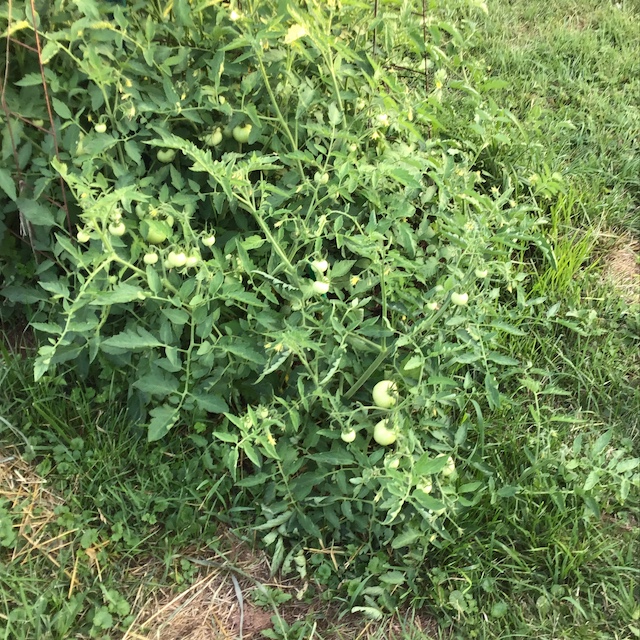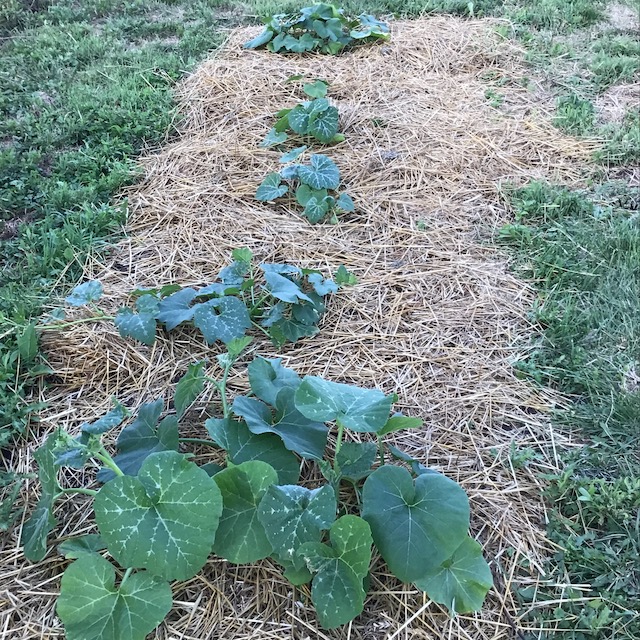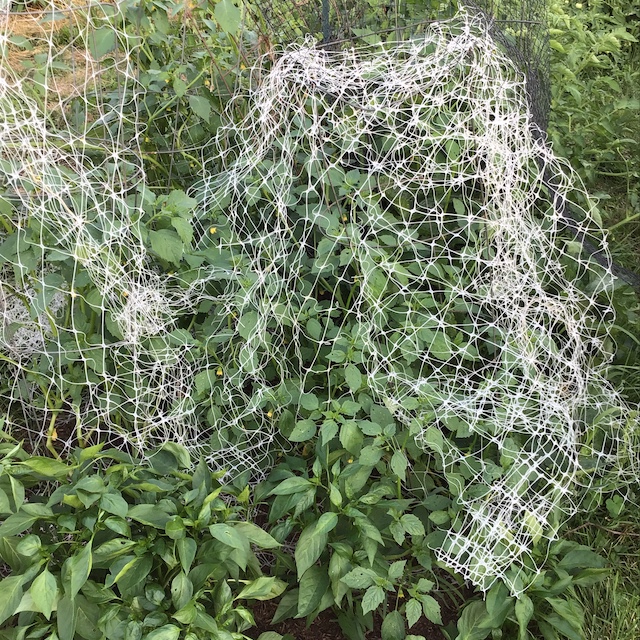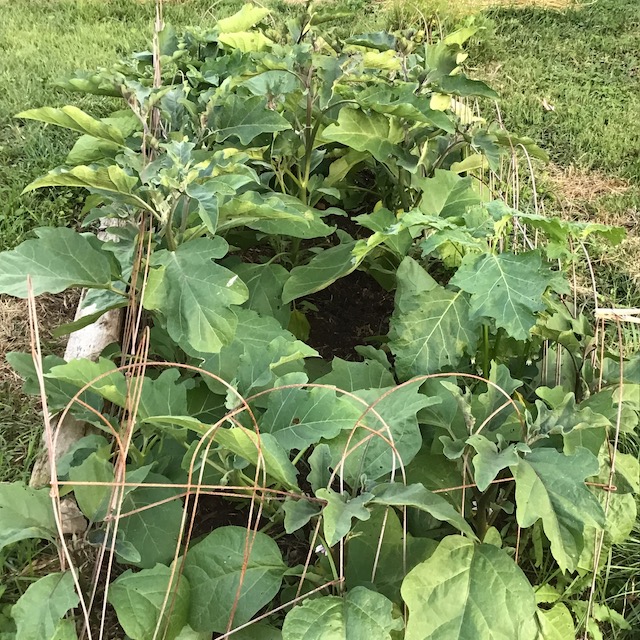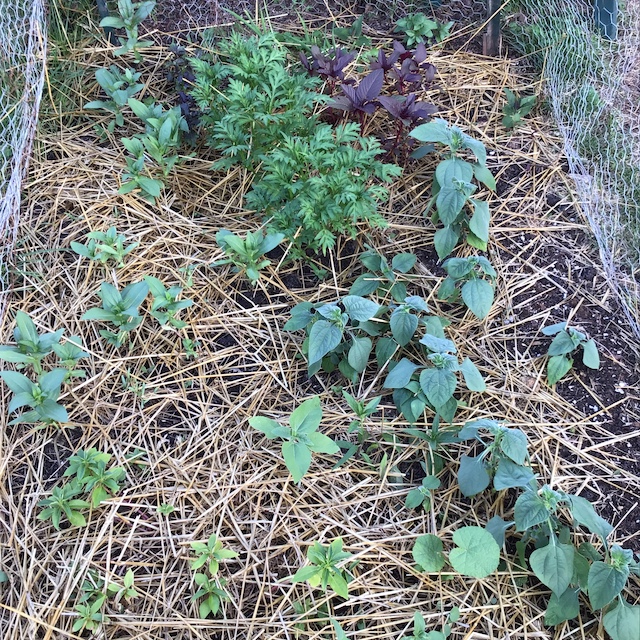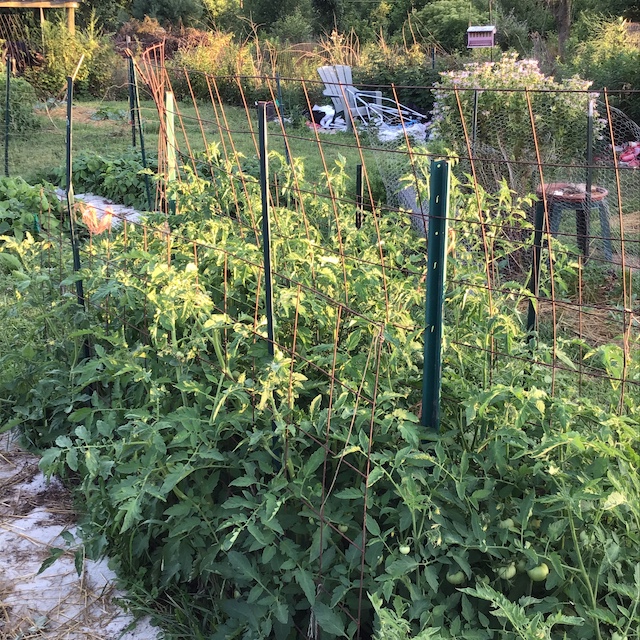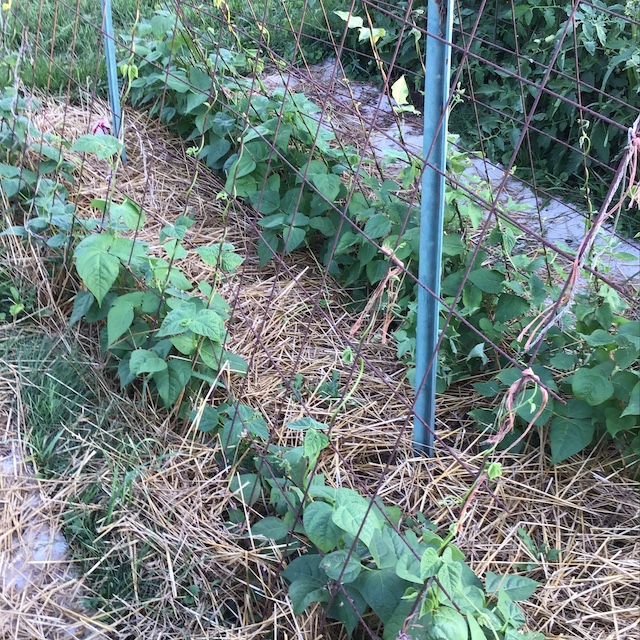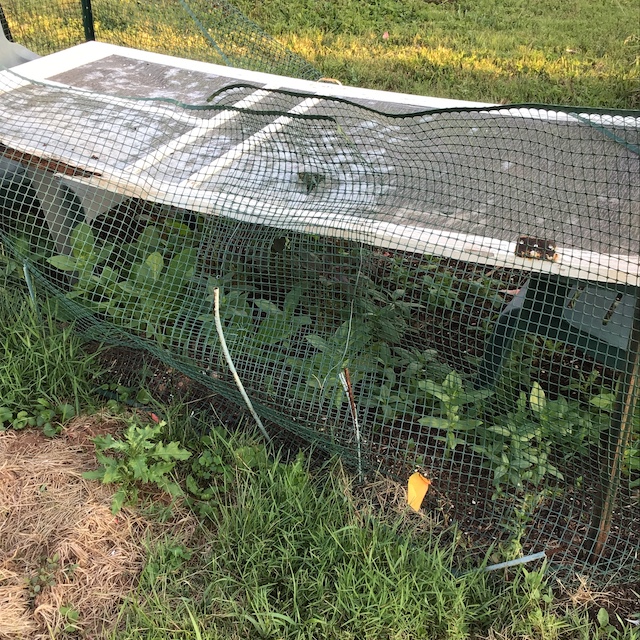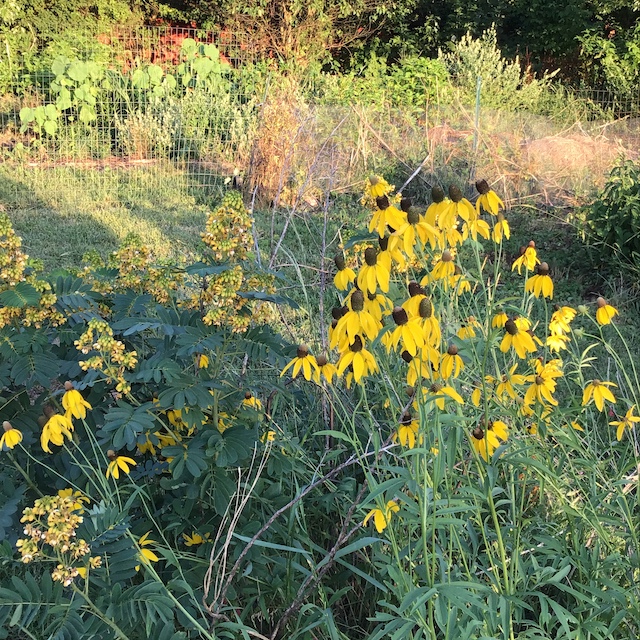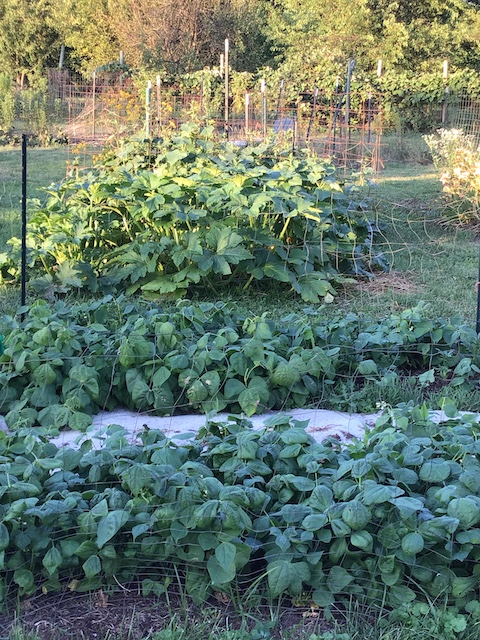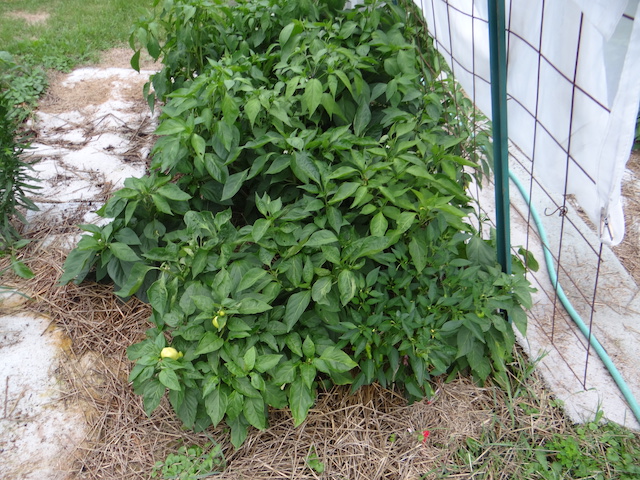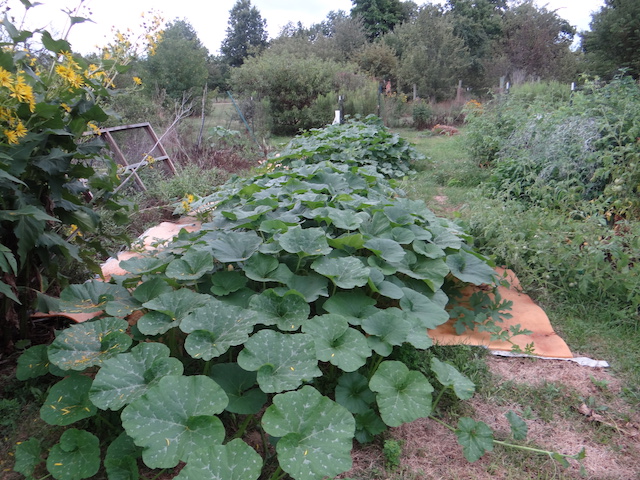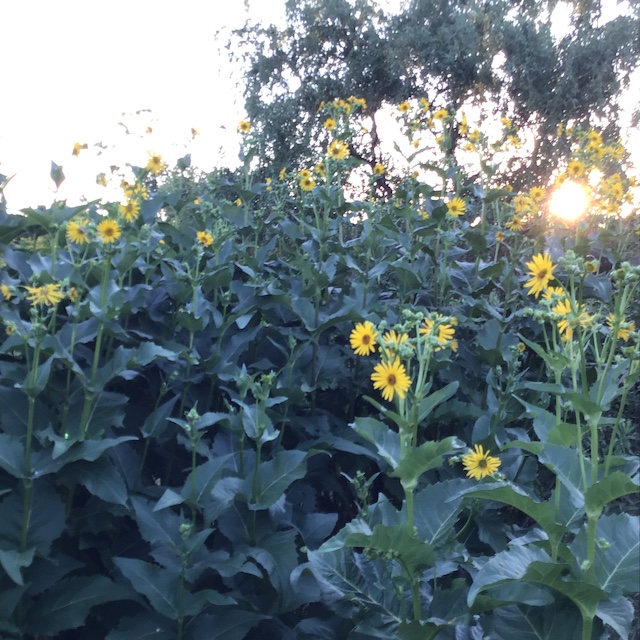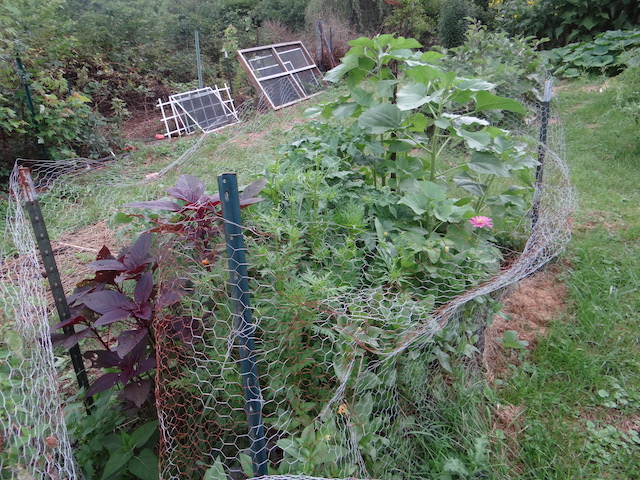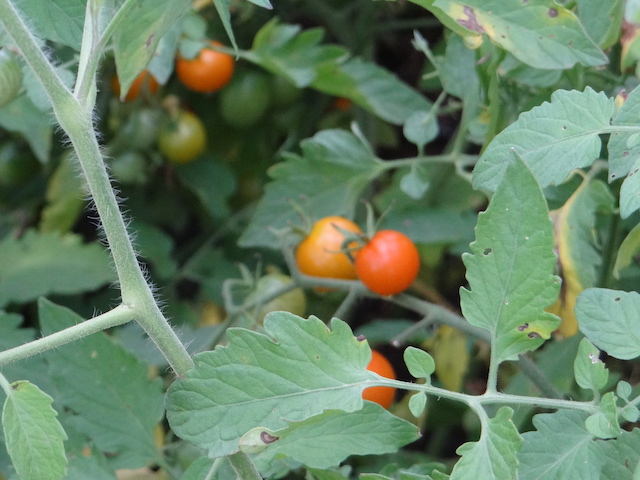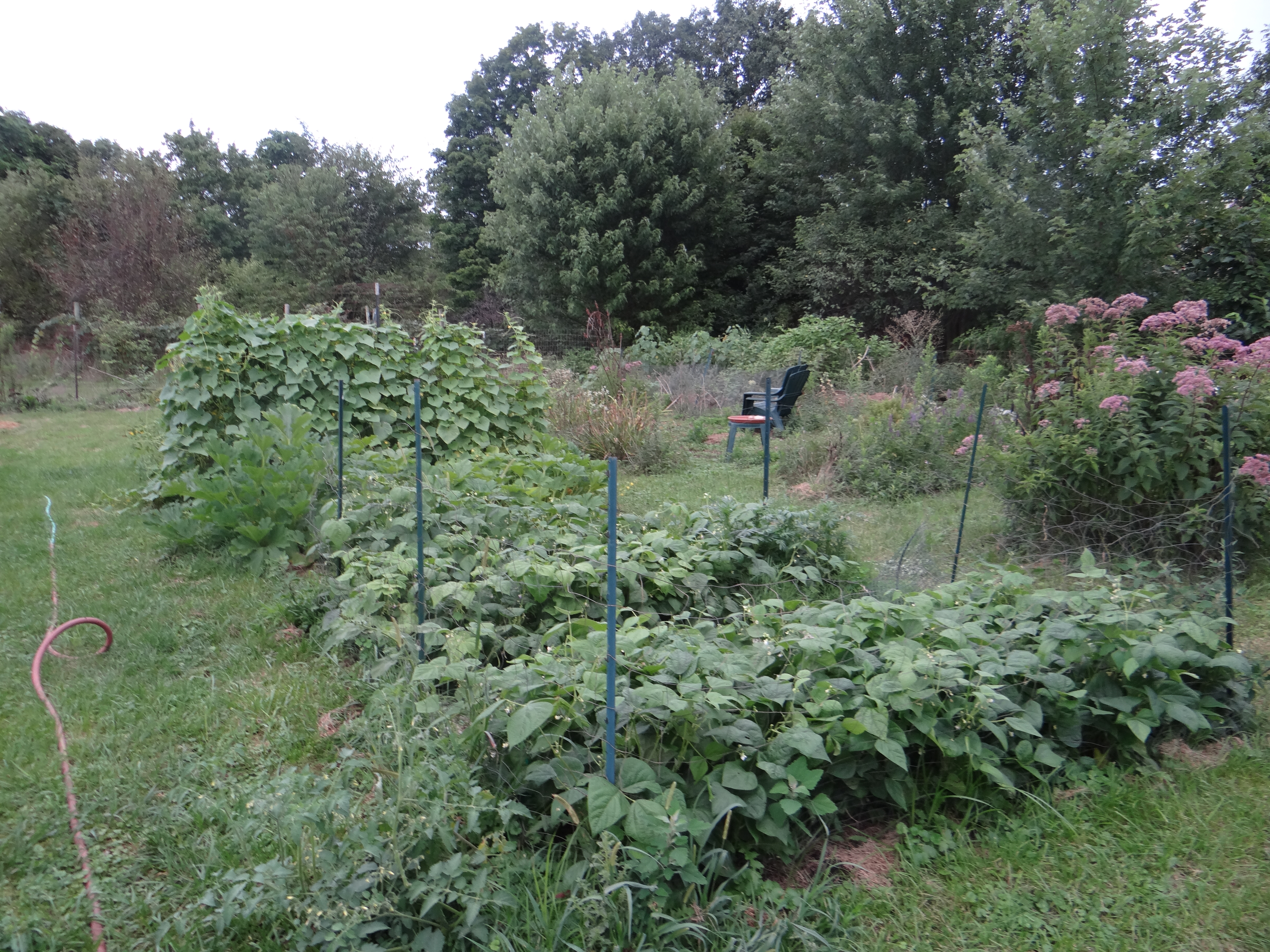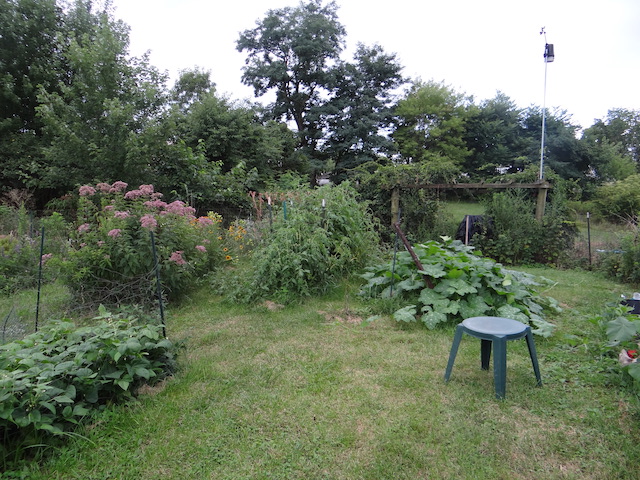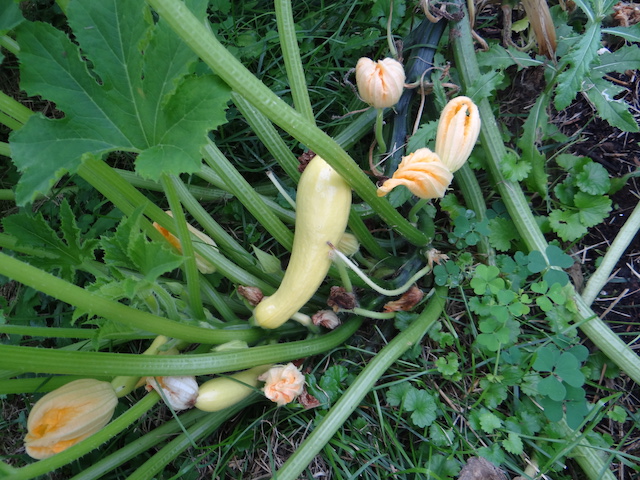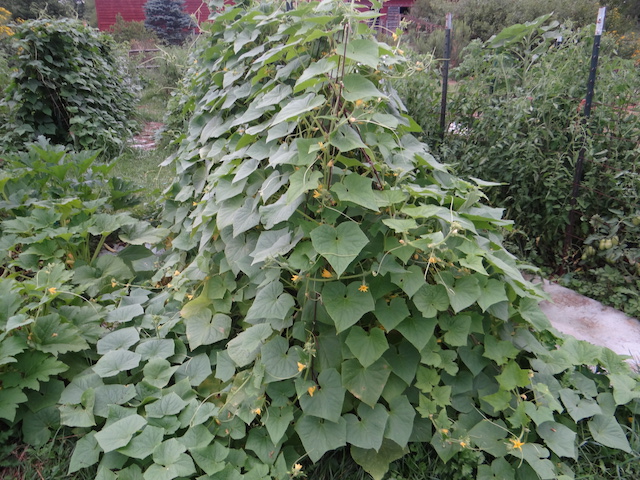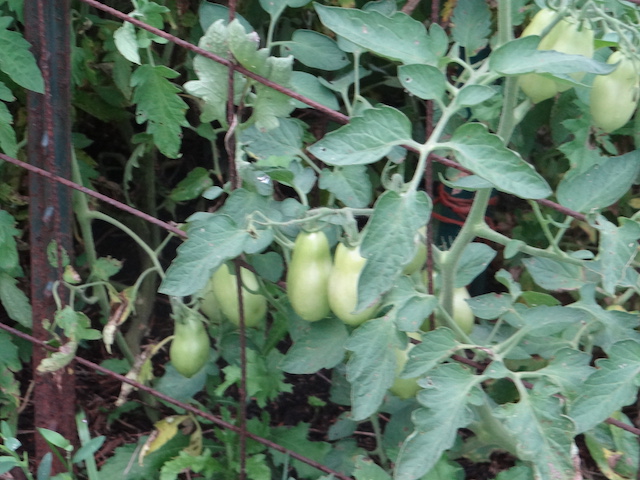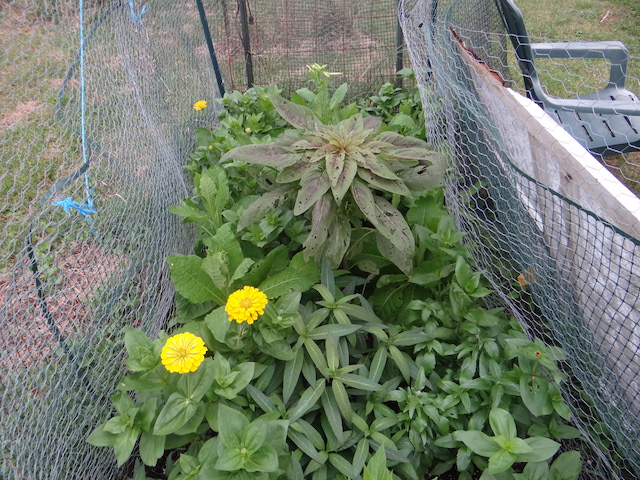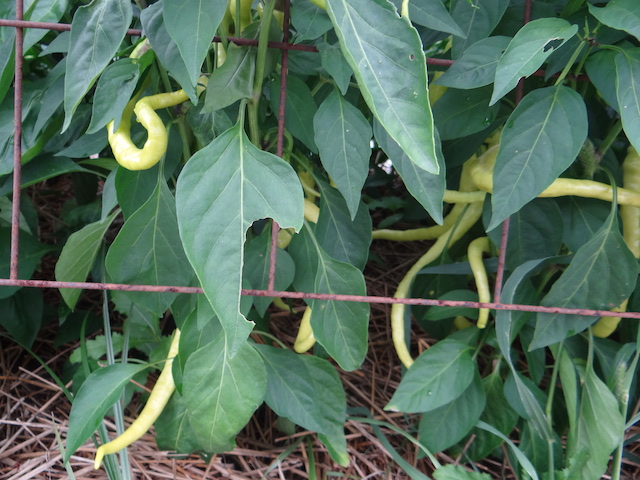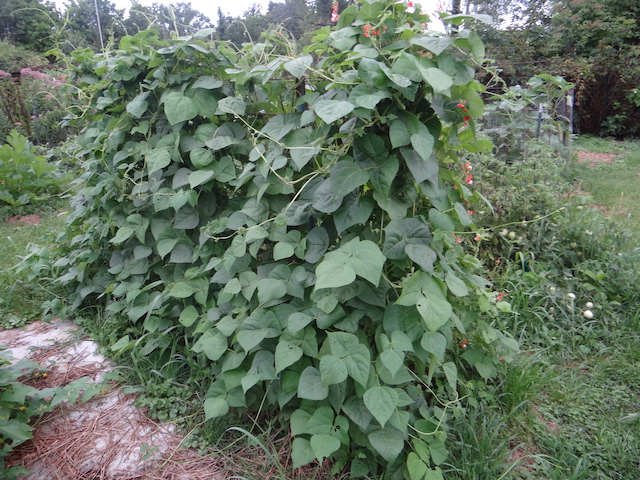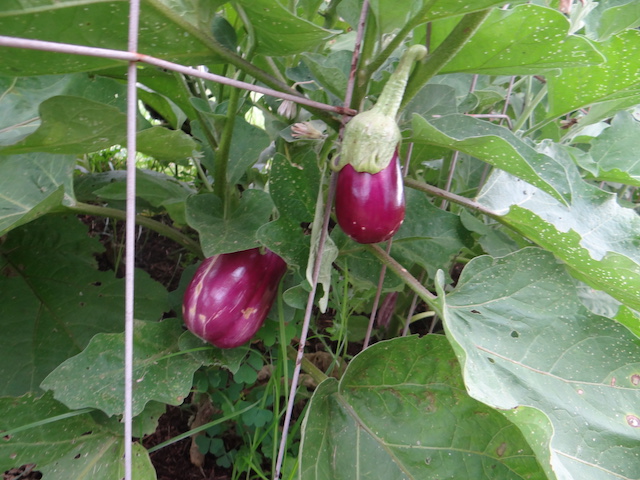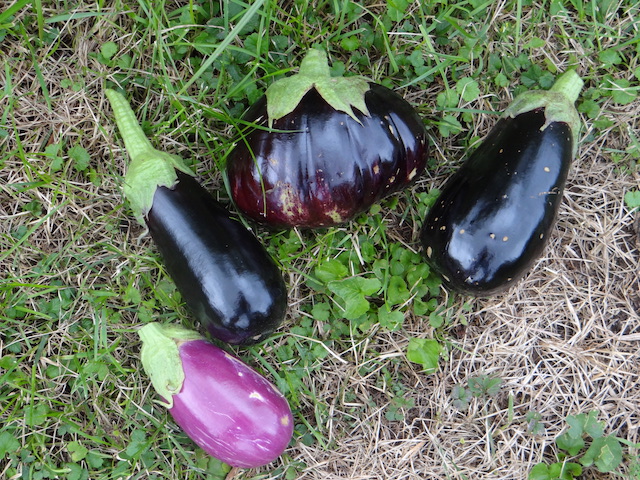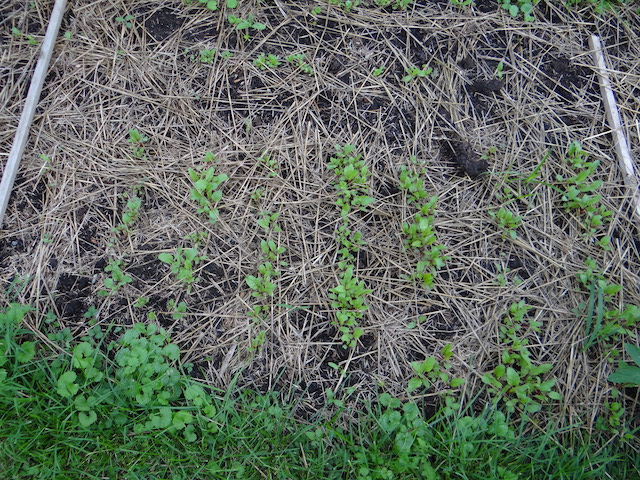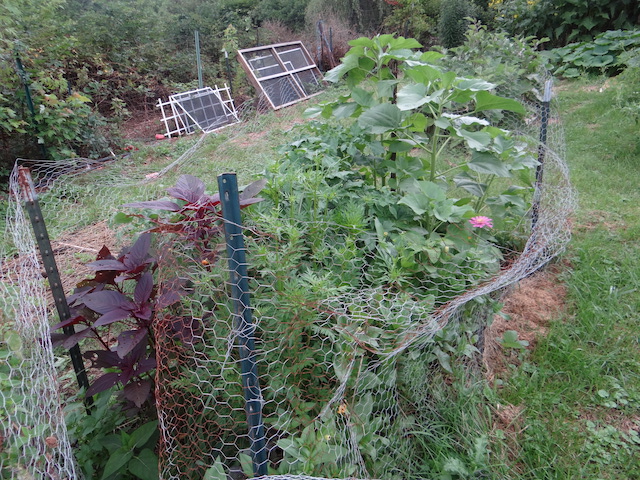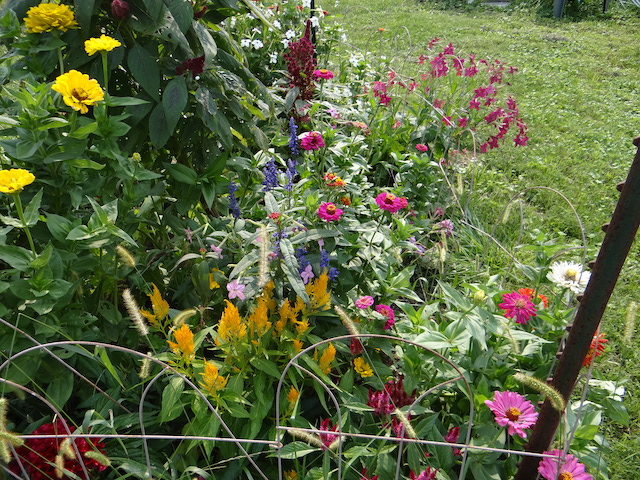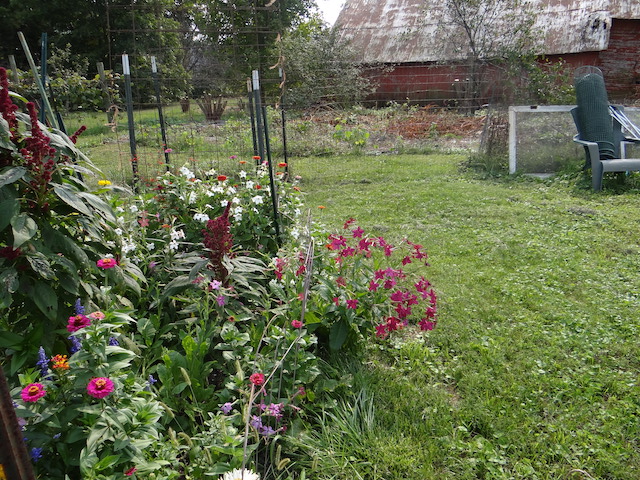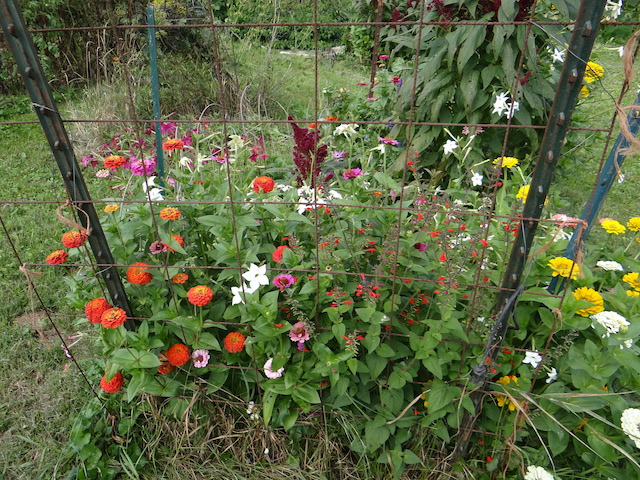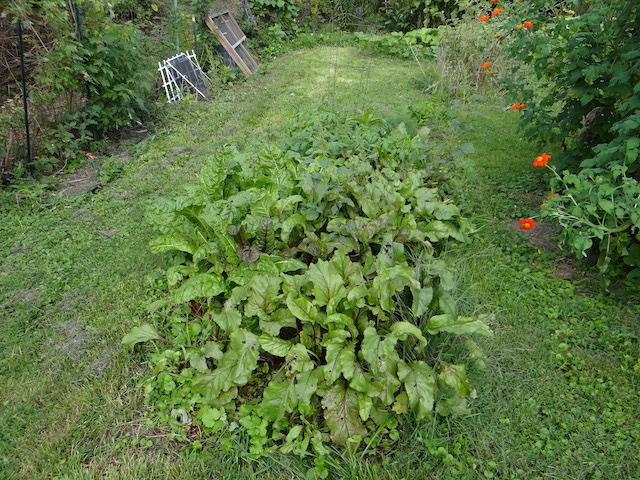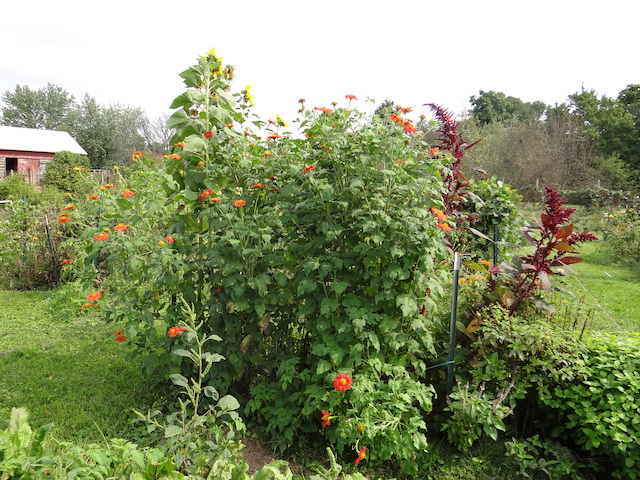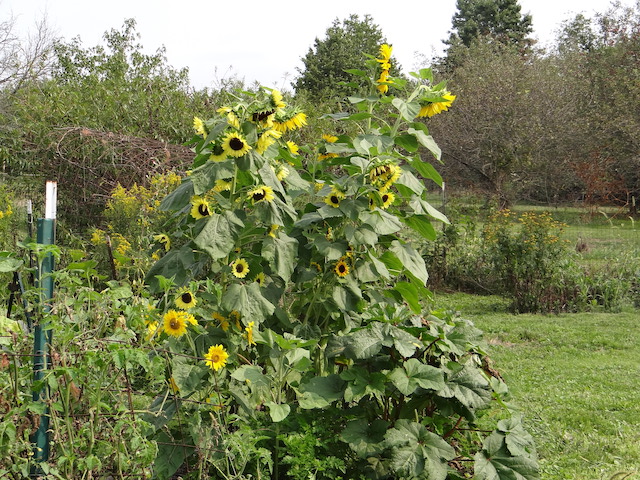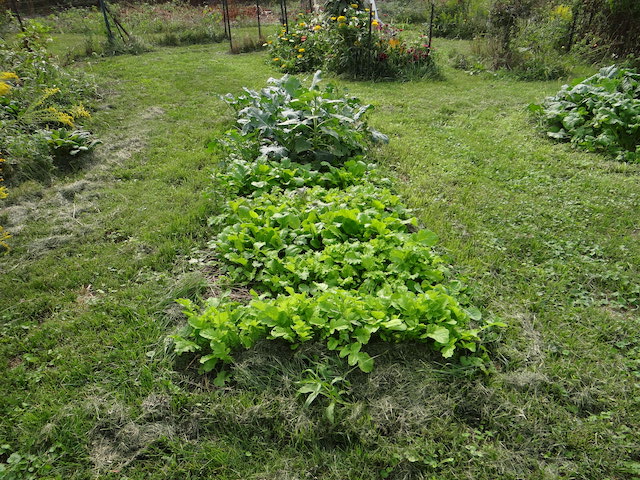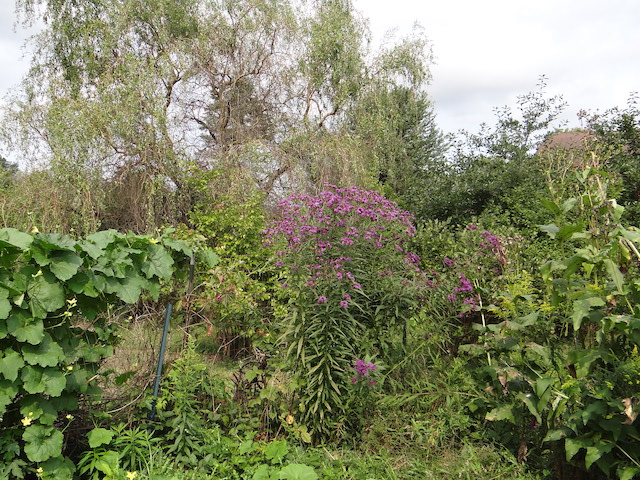Garden prep in June
My veg garden is in a fairly flat area and the soil isn’t bad but every year we have to fight to gain back space from Canadian thistle which is persistent in some form throughout the growing season. We have about 32 beds, a few have been given over to growing perennials permanently. Most are 8×4 feet or longer depending on location. We (my son and I) have to reclaim beds every spring from creeping charley overgrowth and grass incursion. Then we top each of them with local mushroom soil–2 or more barrows each.
I had peppers, tomatoes and eggplants started under lights and those are always the first things planted to start the season. The rest was planted using every seed pack (so many varieties) that I had on hand, so that whatever viability remained could be put to use.
We had removed half of a stained rug from our great room by cutting it into usable strips which worked great to keep down weeds (esp. thistle) between some of the beds or to kill weeds in beds that weren’t prepped yet and this made the mowing chores easier too.
The pix below show a couple shade structures for peppers. I have shade cloth on one and found that old sheers held onto concrete reinforcing mesh worked very well.
The other thing I did was immediately cover the entire bed of eggplants with lightweight garden bed cover to exclude the flea beetles.
(Click to enlarge photos in each gallery set)
July
This shows the progress of the garden into July. Tomatoes, summer squash, cucumbers, winter squash, tomatillos, peppers, bush and pole beans. I had decided not to plant any brassicas or lettuce greens until late summer. One problem I had was that some critters (probably meadow voles) would immediately chew in half any okra, sunflowers, tomatillos or destroy other flowers–especially morning glory family as soon as they were transplanted. So I had to go to some extreme lengths to keep them out of certain beds. Thus the netting and layered fencing. Same with the bush beans–fenced. Pole beans were partly eaten and replanted. Okra that survived grew back but stayed extremely dwarfed.
August
Showing progress in August. We were harvesting the cukes, tomatoes, sweet peppers, beans and eggplant and summer squash. We put down strips of foam backing that came fron under the cut up rug to keep down weeds on either side of the winter squash which was happily rambling through the fence and into some adjacent beds. I planted more beets, chard, dill and brassicas in later August.
September
I finally get the only flowers (these are all annuals) to blooming stage after so many restarts from the darn voles. Yay, some sunflowers in bloom too! In September the cukes, summer squash, eggplant and bush beans are pretty much done.Tomatoes are producing but it isn’t going to be a second big haul this year since they have septoria leaf spot and many big ones got chewed on where voles could reach. The hot peppers still need to color up better. Monarchs have finally arrived but the flowers bloomed so late that many of the other butterflies are not much in evidence by now. Some hummingbirds enjoyed the flowers too and I would often see them in the pole beans. The brassicas are doing very well and lettuces and peas are growing but getting tasted by critters.I have noted the arrival of the dreaded messy harlequin beetle feeding on the collards.
Oct
I am leaving some of the pole beans to grow as shelly beans and we continue to pick the riper hot peppers. All winter squash were harvested due to voles chewing holes and excavating them so it was a rescue mission. The ironweed is attracting many pollinators and surprise! I have actually got some ridge gourds out of a group of late transplants. Still much chard, beets, mustard, kale and other greens to harvest if the harlequins leave them be.
Harvests
The following photos show a few of the harvests that were documented up to end of September. As of October, there’s probably 30 or more varied winter squash curing on racks and tables not shown here.
I really enjoy vegetable gardening and including flowers in the adjacent beds that will attract pollinators and beneficials. One of my favorite things is experimenting with growing veg seed varieties from around the world to see how they do in my local climate and I like to encourage garden club members to step outside the habit of only growing the usual types. What’s next? I have a huge garlic order on the way from Mad River Garlic in Ohio, primarily hard necks, including many varieties! (We use lots of garlic!)

